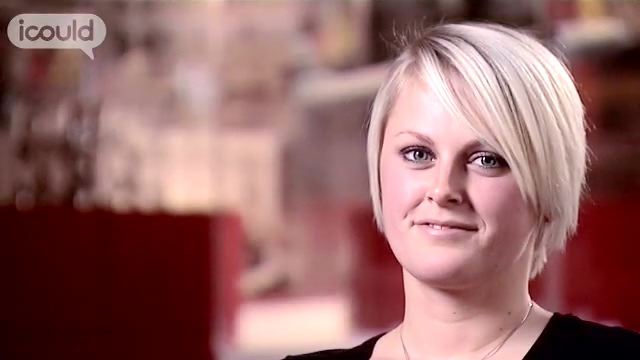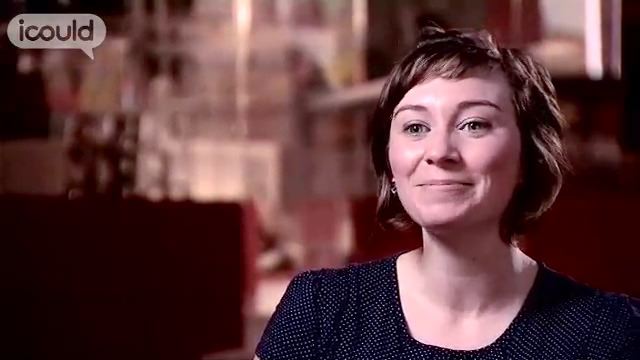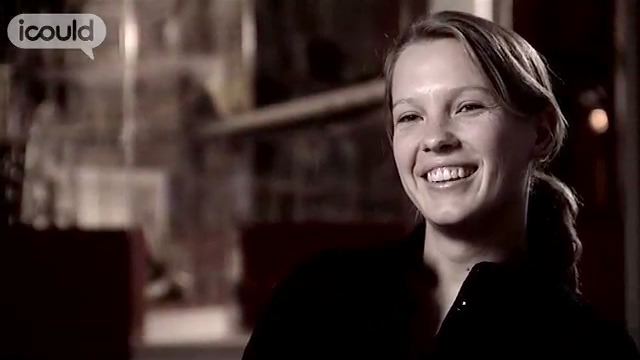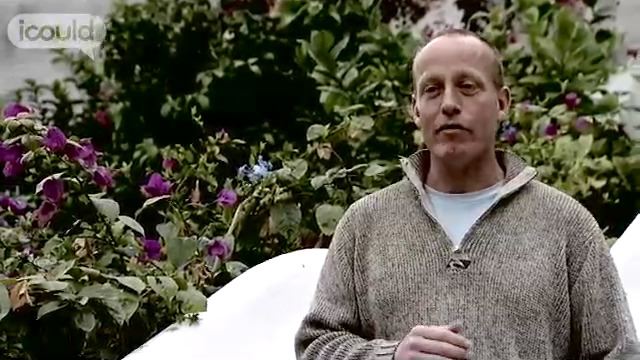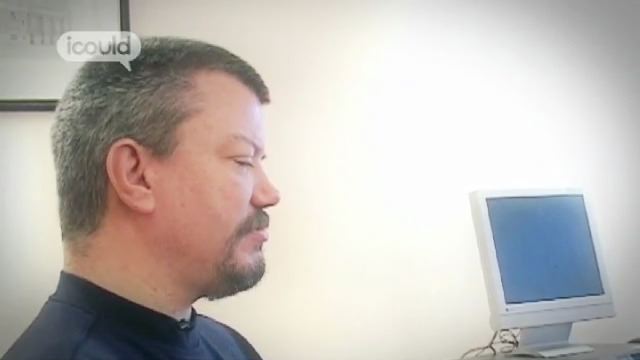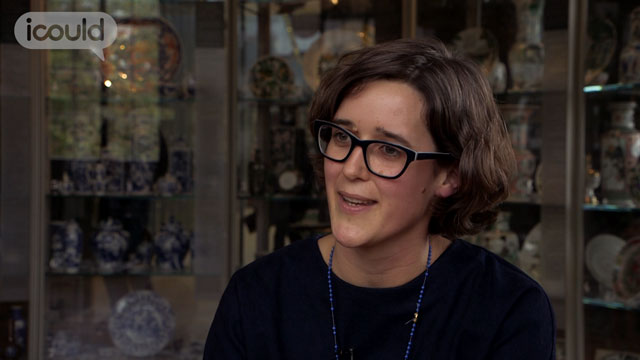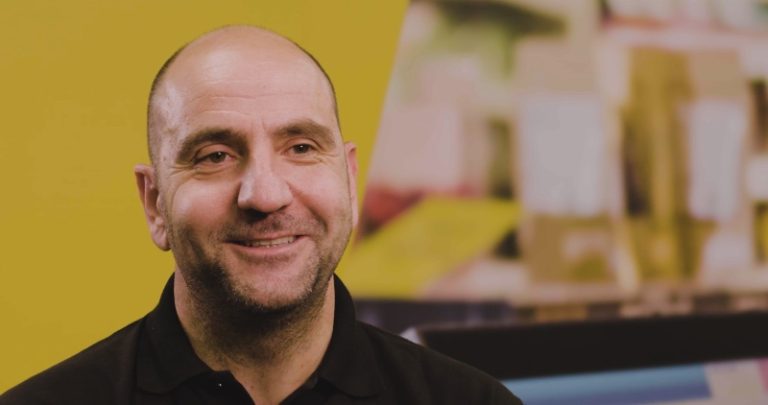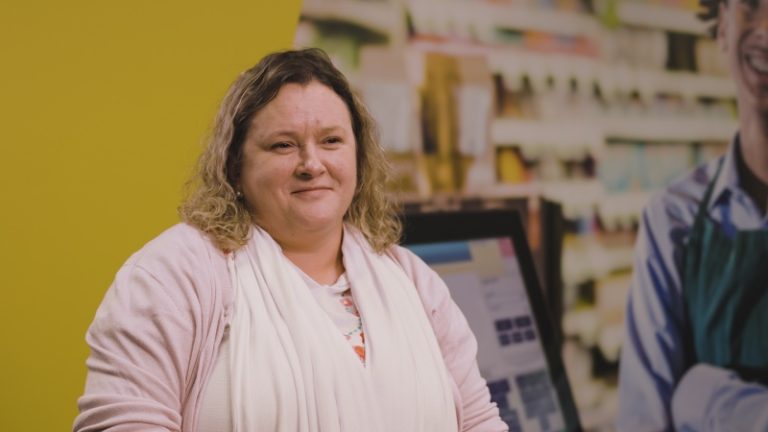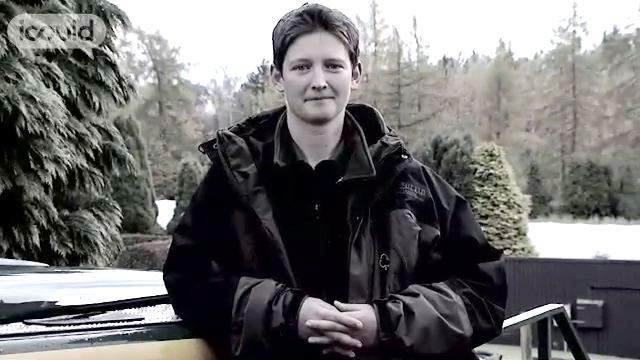Explore: Leisure, tourism and museums
Assistant Curator
V&A Museum
info Issues viewing the video?
| Time Code | INTERVIEW WITH ELIZABETH BAILEY |
| 00:02 | My name is Lizzie Bisley. I’m an assistant curator in the furniture, textiles and fashion department at the V&A. |
| 00:08 | My job is incredibly varied, so this morning I started my day doing some research on a Napoleonic medal cabinet that the V&A has just acquired and then I spent about an hour looking at an amazing 1950s Christian Dior dress. Tomorrow I’ve got some visitors coming in to look at some 1980s Italian designs. I’ll be meeting them in the store to look at that and I spend quite a lot of time doing writing and research on the collection and publishing things on-line, on the V&A search the collections database. |
| 00:44 | The best thing about working at the V&A is probably working with the collection because I find it incredibly exciting to work with objects. The V&A has an amazing collection, but in any museum collection, I think, you’ll always find objects that tell you something very interesting and very unexpected about the period that you’re looking at or the people who made it, and no matter how many times an object has been studied, there’s always something else that you can think about it or discover about it, which is really thrilling. But the other great thing about working at the V&A is that it’s filled with so many interesting people. You’re always meeting people who have something exciting and different to tell you. |
| 01:26 | I really enjoyed history at high school and then went on to do my degree and had a job for a couple of years, working in a public contemporary art gallery, which was great, but I realised that I really wanted to do something that was more history focussed. So I came and started doing a masters degree in history of design and then worked for about three or four years doing about ten jobs at a time, managing to get little bits of research and editorial work and little bits of writing and kind of finally managed to get a job as an assistant curator, and I think one of the difficult things about getting into curatorial work is that there aren’t a huge number of jobs, so you need to be willing to take on lots of different things and look at it in as broad a way as possible and make your own projects if there aren’t any available, that kind of thing and attack it in as many different ways as you can.a |
| 02:29 | In the furniture and textiles and fashion department, we work a lot with young people who come in as visitors and so partly school groups who come in, either to have appointments in our stores and look at objects in the store, in the study rooms, objects that are in storage or we also give talks and tours to school groups, quite often, who come round. But we also offer various internships, often for students who are in a summer between two years of a degree programme. We try to give as much help as possible to students who want to work in museums and give them a real sense of what the practical work of being in a museum is like. |
| 03:13 | I think you need to be, to do a job like the assistant curator job at the V&A, you need to be interested in objects and you need to be interested in research and you need to be interested in history or thinking about what objects can tell you about the past or the present. You also have to be quite able to work in a very varied way and you have to enjoy practical work because a lot of curatorial jobs are quite practical. So you have to kind of enjoy a balance of research and writing and then more practical tasks and if you like that kind of balance, it’s a fantastic job because it’s so varied and you get to meet so many different kinds of people and do different types of work. |
| 04:00 | I think the main thing about trying to get curatorial work is to be as open minded as you can about things that might help along the way. So you need to be able to try lots of things out, take little bits of work where they’re offered, do little internships, if you can, because it can take, there aren’t a huge number of jobs, so it can take a little while to get in. But once you’re there, it’s worth the effort. |
| 04:28 | END |
“You get to meet so many different kinds of people and do different types of work.” Lizzie really enjoys the variety of her job and the balance between research and practical tasks. After studying history at university, she worked in a contemporary art gallery, and then took a masters degree in history of design. Small pieces of research, editorial and writing work followed, before she managed to get a job as an assistant curator.
More information about Chartered architectural technologists, planning officers and consultants
Data powered by LMI For All
£49,920
average salary
The UK average salary is £29,813
41
average weekly hoursThere are 37.5 hours in the average working week
59%
male
41%
female
The UK workforce is 47% female and 53% male
Future employment
Future employment
Description
Chartered architectural technologists, planning officers and consultants direct or undertake the planning of the layout and the co-ordination of plans for the development of urban and rural areas, provide architectural design services, and negotiate and manage the development from conception to completion of construction projects and lead on a variety of technical functions and solutions in the design of buildings and the layout of urban and rural areas.
Qualifications
Entrants possess a variety of qualifications including GCSEs/S grades, a BTEC/SQA award, an Honours or Masters degree. Membership of professional institutions may be required for some posts. To gain professional status an accredited Honours degree or postgraduate qualification is usually required, as well as continuing professional development. Chartered Architectural Technologists must join the Chartered Institute of Architectural Technologists and satisfy its’ education, practice and professional standards to qualify via an accredited honours degree or equivalent, monitored and assessed practical experience and pass a professional interview. Town planners are also required to complete at least two years of work experience.
Tasks
- Analyses information to establish the nature, extent, growth rate and likely development requirements of the area
- Examines and evaluates development proposals, consults statutory bodies and other interested parties to ensure that local interests are catered for and recommends acceptance, modification or rejection drafts and presents graphic and narrative plans affecting the use of public and private land, housing and transport facilities
- Develops construction project briefs and design programmes and advises clients on methods project procurement, environmental, regulatory, legal and contractual issues and assesses environmental impact
- Monitors compliance with design, statutory, and professional requirements, administers contracts and certification, carries out design stage risk assessments and manages health and safety
- Evaluates and advises on refurbishment, recycling and deconstruction of buildings
- Prepares designs, building plans and drawings for use by contracts and investigates proposed design with regard to practicality, cost and use
- Surveys land uses and prepares report for planning authority and issues development permits as authorised
- Liaises with engineers and building contractors regarding technical construction problems and attends site meetings, as the lead consultant or as part of the team.
- Provides expert advice on issues related to planning and development, including practical, regulatory, legal and statutory matters
- Chartered architectural technologists specialise in design, underpinned by building science, engineering and technology applied to architecture within projects.
Employment by region
Top 10 industries for this job
Architectural & related
39692
Construction
5162
Public admin. & defence
3788
Head offices, etc
1978
Other personal service
1649
Sport & recreation
1176
Coke & refining; Chemicals,etc
1171
Employment status
Related career stories
⇦
⇨
